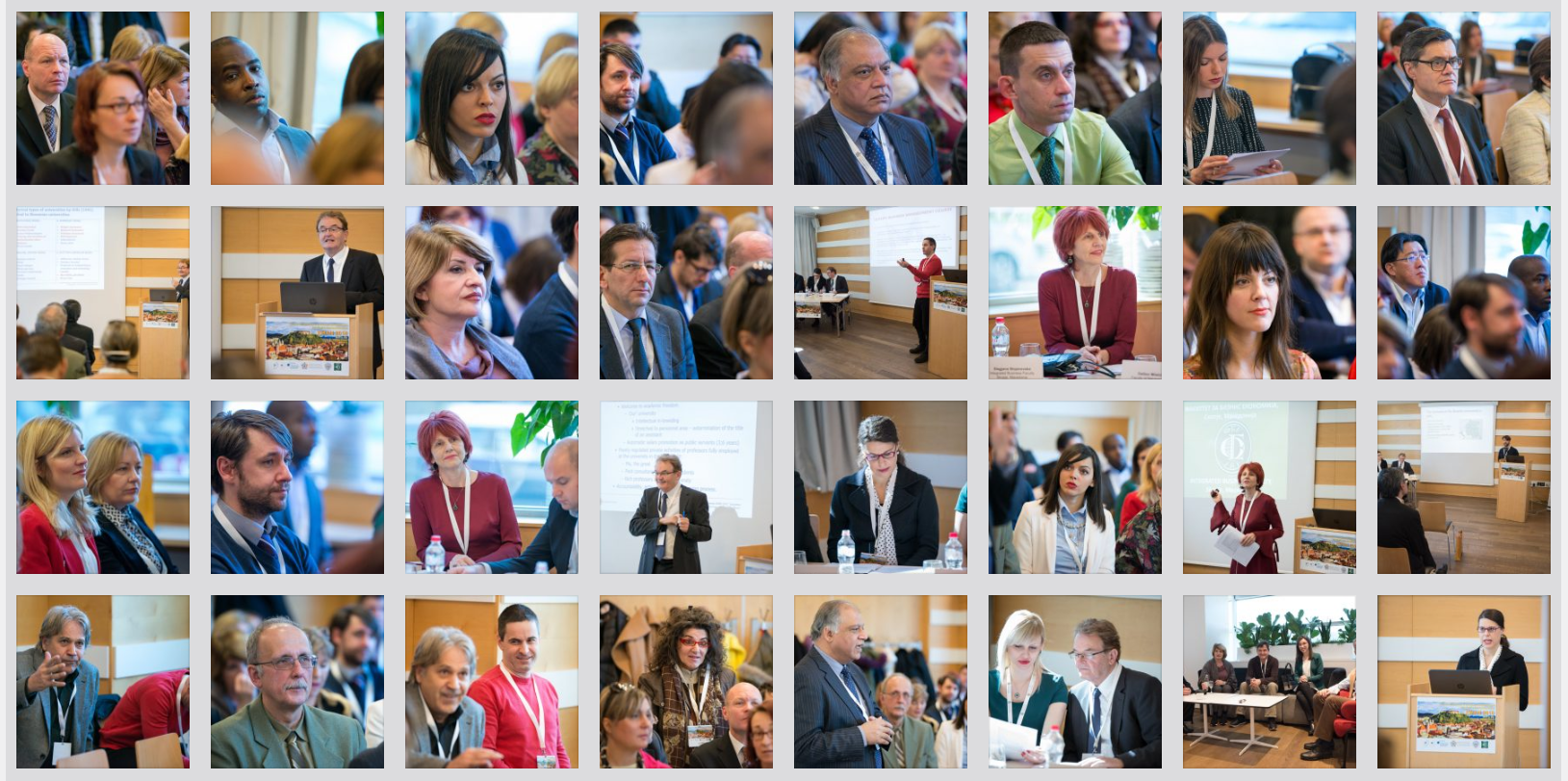Nicole Horta – ESCE, Instituto Politécnico de Setúbal, Portugal
Mariana Chambino – ESCE, Instituto Politécnico de Setúbal, Portugal
Rui Dias – ESCE, Instituto Politécnico de Setúbal, Portugal; Center for Studies and Advanced Training in Management and Economics (CEFAGE), University of Évora, Portugal
Keywords:
Clean energy;
2020 and 2022 events;
Co-movements;
Diversification of portfolios
Abstract: The study of the changes between the Energy Fuels Index, S&P Global Clean Energy Index, iShares Global Clean Energy ETF, iShares Global Energy (SWX) ETF, as well as the changes in the prices of crude oil (BRENT), gold (DJ), and natural gas (DG) was deemed extremely relevant given the importance and emergence of clean energies in the global landscape, as well as the need to develop more empirical studies, especially confirmative studies on the financial dynamics in these markets. The daily returns under analysis exhibit negative and leptokurtic asymmetry rather than a normal distribution. Comparatively, the pre-crisis linkages between the markets for dirty and clean energy are in favor of global portfolio diversification since those low levels of dependence are appropriate to reduce investor exposure to risk. The crude oil market already exhibited a significant effect on the clean energy markets during the Stress subperiod, particularly on the Clean Energy Fuels Index, the iShares Global Clean Energy ETF, and the iShares Global Clean Energy (SWX) ETF. It should be highlighted that the clean energy markets have also increased their impact on the markets for gold and dirty energy (crude oil and natural gas). The findings point to an increase in comovements between the examined indices and the events of 2020 and 2022. These results decrease the possibility that clean energy markets will serve as a portfolio diversification substitute for the gold and dirty energy markets. For investors and financial analysts who are interested in understanding how the various sectors of the energy market interact, these results may also have consequences. These results can enable a more precise forecast of energy market trends and more informed investment decisions by offering a more detailed knowledge of the link between clean and dirty energy prices.

Download full paper

7th International Scientific Conference – EMAN 2023 – Economics and Management: How to Cope With Disrupted Times, Ljubljana, Slovenia, March 23, 2023, CONFERENCE PROCEEDINGS, published by: Association of Economists and Managers of the Balkans, Belgrade, Serbia; ISBN 978-86-80194-69-1, ISSN 2683-4510, DOI: https://doi.org/10.31410/EMAN.2023
Creative Commons Non Commercial CC BY-NC: This article is distributed under the terms of the Creative Commons Attribution-Non-Commercial 4.0 License (https://creativecommons.org/licenses/by-nc/4.0/) which permits non-commercial use, reproduction and distribution of the work without further permission.
Angelini, E., Birindelli, G., Chiappini, H., & Foglia, M. (2022). Clean energy indexes and brown assets: an analysis of tail risk spillovers through the VAR for VaR model. Journal of Sustainable Finance and Investment. https://doi.org/10.1080/20430795.2022.2105788
Basoglu, M. S., Korkmaz, T., & Cevik, E. I. (2014). London metal exchange: Causality relationship between the price series of non-ferrous metal contracts. International Journal of Economics and Financial Issues, 4(4).
Breitung, J. (2000). The local power of some unit root tests for panel data. Advances in Econometrics. https://doi.org/10.1016/S0731-9053(00)15006-6
Chen, J., Wang, Y., & Ren, X. (2022). Asymmetric effects of non-ferrous metal price shocks on clean energy stocks: Evidence from a quantile-on-quantile method. Resources Policy, 78. https://doi.org/10.1016/j.resourpol.2022.102796
Dias, R., Pereira, J. M., & Carvalho, L. C. (2022). Are African Stock Markets Efficient? A Comparative Analysis Between Six African Markets, the UK, Japan and the USA in the Period of the Pandemic. Naše Gospodarstvo/Our Economy, 68(1), 35–51. https://doi.org/10.2478/ngoe-2022-0004
Dias, R., & Santos, H. (2020). the Impact of Covid-19 on Exchange Rate Volatility: an Econophysics Approach. 6th LIMEN Conference Proceedings (Part of LIMEN Conference Collection), 6(July), 39–49. https://doi.org/10.31410/limen.2020.39
Dias, R., Teixeira, N., Machova, V., Pardal, P., Horak, J., & Vochozka, M. (2020). Random walks and market efficiency tests: Evidence on US, Chinese and European capital markets within the context of the global Covid-19 pandemic. Oeconomia Copernicana, 11(4). https://doi.org/10.24136/OC.2020.024
Dias, R. T., & Carvalho, L. (2021a). Foreign Exchange Market Shocks in the Context of the Global Pandemic (COVID-19). 359–373. https://doi.org/10.4018/978-1-7998-6643-5.ch020
Dias, R. T., & Carvalho, L. (2021b). The Relationship Between Gold and Stock Markets During the COVID-19 Pandemic. May, 462–475. https://doi.org/10.4018/978-1-7998-6643-5.ch026
Dias, R. T., Pardal, P., Teixeira, N., & Horta, N. R. (2022). Tail Risk and Return Predictability for Europe’s Capital Markets: An Approach in Periods of the 2020 and 2022 Crises. Advances in Human Resources Management and Organizational Development, 281-298. https://doi.org/10.4018/978-1-6684-5666-8.ch015
Dickey, D., & Fuller, W. (1981). Likelihood ratio statistics for autoregressive time series with a unit root. Econometrica, 49(4), 1057–1072. https://doi.org/10.2307/1912517
Foglia, M., Angelini, E., & Huynh, T. L. D. (2022). Tail risk connectedness in clean energy and oil financial market. Annals of Operations Research. https://doi.org/10.1007/s10479-022-04745-w
Granger, C. W. J., & Newbold, P. (1974). Spurious regressions in econometrics. Journal of Econometrics, 2(2), 111–120. https://doi.org/10.1016/0304-4076(74)90034-7
Guedes, E. F., Santos, R. P. C., Figueredo, L. H. R., Da Silva, P. A., Dias, R. M. T. S., & Zebende, G. F. (2022). Efficiency and Long-Range Correlation in G-20 Stock Indexes: A Sliding Windows Approach. Fluctuation and Noise Letters. https://doi.org/10.1142/S021947752250033X
He, Y. X., Jiao, Z., & Yang, J. (2018). Comprehensive evaluation of global clean energy development index based on the improved entropy method. Ecological Indicators, 88. https://doi.org/10.1016/j.ecolind.2017.12.013
Herranz, E. (2017). Unit root tests. In Wiley Interdisciplinary Reviews: Computational Statistics. https://doi.org/10.1002/wics.1396
Horta, N., Dias, R., Revez, C., & Alexandre, P. (2022). CRYPTOCURRENCIES AND G7 CAPITAL MARKETS INTEGRATE IN PERIODS OF EXTREME VOLATILITY ? 10(3), 121–130.
Horta, N., Dias, R., Revez, C., Heliodoro, P., & Alexandre, P. (2022). Spillover and Quantitative Link Between Cryptocurrency Shocks and Stock Returns: New Evidence From G7 Countries. Balkans Journal of Emerging Trends in Social Sciences, 5(1), 1–14. https://doi.org/10.31410/balkans.jetss.2022.5.1.1-14
Im, K. S., Pesaran, M. H., & Shin, Y. (2003). Testing for unit roots in heterogeneous panels. Journal of Econometrics. https://doi.org/10.1016/S0304-4076(03)00092-7
Jarque, C. M., & Bera, A. K. (1980). Efficient tests for normality, homoscedasticity and serial independence of regression residuals. Economics Letters, 6(3), 255–259. https://doi.org/10.1016/0165-1765(80)90024-5
Levin, A., Lin, C.-F., & James Chu, C.-S. (2002). Unit root tests in panel data: asymptotic and finite-sample properties. Journal of Econometrics, 108(1), 1-24. https://doi.org/10.1016/s0304-4076(01)00098-7
Liu, N., Liu, C., Da, B., Zhang, T., & Guan, F. (2021). Dependence and risk spillovers between green bonds and clean energy markets. Journal of Cleaner Production, 279. https://doi.org/10.1016/j.jclepro.2020.123595
Mighri, Z., Ragoubi, H., Sarwar, S., & Wang, Y. (2022). Quantile Granger causality between US stock market indexes and precious metal prices. Resources Policy, 76. https://doi.org/10.1016/j.resourpol.2022.102595
Pandey, D. K., Kumar, R., & Kumari, V. (2023). Glasgow climate pact and the global clean energy index constituent stocks. International Journal of Emerging Markets. https://doi.org/10.1108/IJOEM-05-2022-0815
Pardal, P., Dias, R., Teixeira, N., & Horta, N. (2022). The Effects of Russia’ s 2022 Invasion of Ukraine on Global Markets : An Analysis of Particular Capital and Foreign Exchange Markets. https://doi.org/10.4018/978-1-6684-5666-8.ch014
Pardal, P., Dias, R. T., Santos, H., & Vasco, C. (2021). Central European Banking Sector Integration and Shocks During the Global Pandemic (COVID-19). June, 272–288. https://doi.org/10.4018/978-1-7998-6926-9.ch015
Perron, P., & Phillips, P. C. B. (1988). Testing for a Unit Root in a Time Series Regression. Biometrika, 2(75), 335–346. https://doi.org/10.1080/07350015.1992.10509923
Reboredo, J. C., & Ugolini, A. (2018). The impact of energy prices on clean energy stock prices. A multivariate quantile dependence approach. Energy Economics, 76. https://doi.org/10.1016/j.eneco.2018.10.012
Shafiullah, M., Chaudhry, S. M., Shahbaz, M., & Reboredo, J. C. (2021). Quantile causality and dependence between crude oil and precious metal prices. International Journal of Finance and Economics, 26(4). https://doi.org/10.1002/ijfe.2119
Tahai, A., Rutledge, R. W., & Karim, K. E. (2004). An examination of financial integration for the group of seven (G7) industrialized countries using an I (2) cointegration model. Applied Financial Economics, 14(5), 327–335. https://doi.org/10.1080/0960310042000211597
Teixeira, N., Dias, R., & Pardal, P. (2022). The gold market as a safe haven when stock markets exhibit pronounced levels of risk : evidence during the China crisis and the COVID-19 pandemic. April, 27–42.
Teixeira, N., Dias, R. T., Pardal, P., & Horta, N. R. (2022). Financial Integration and Comovements Between Capital Markets and Oil Markets: An Approach During the Russian Invasion of Ukraine in 2022. Advances in Human Resources Management and Organizational Development, 240-261. https://doi.org/10.4018/978-1-6684-5666-8.ch013
Tiwari, A. K., Abakah, E. J. A., Yaya, O. O. S., & Appiah, K. O. (2023). Tail risk dependence, co-movement and predictability between green bond and green stocks. Applied Economics, 55(2). https://doi.org/10.1080/00036846.2022.2085869
Yahya, M., Ghosh, S., Kanjilal, K., Dutta, A., & Uddin, G. S. (2020). Evaluation of cross-quantile dependence and causality between non-ferrous metals and clean energy indexes. Energy, 202. https://doi.org/10.1016/j.energy.2020.117777






